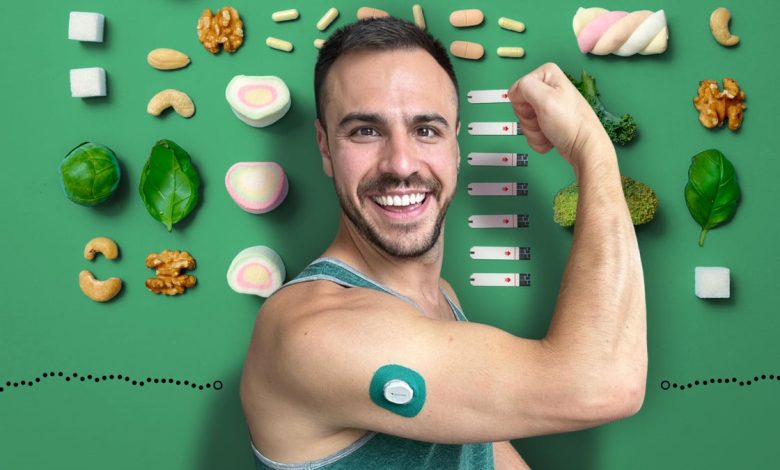Two Type 1 Diabetes Gadgets I Want Everyone to Know About

Three years ago, a doctor diagnosed me with type 2 diabetes after a blood test showed a high A1C level. He wrote me a prescription for Metformin and sent me away without any information or instructions. I left the office feeling alone, scared and confused.
After six months of taking the prescribed medication, I felt sick all the time and had lost 20 pounds. I found a new doctor who told me to start testing my blood sugar, aka blood sugar, several times each day. I was already a tech YouTuber reviewing gadgets on social media, so naturally I decided to start documenting this on TikTok. I have posted videos talking about my diagnosis, using a blood glucose meter, and my results.
These videos blew up with comments telling me to get tested for type 1 diabetes and that I should treat my diabetes with insulin. I was told to get a C-peptide test to check for autoantibodies and get a proper diagnosis, so I went and got that lab work done.
TikTok was right
The results came back positive for a form of adult-onset diabetes known as latent adult-onset autoimmune disease, or LADA, also known as type 1.5, a chronic disease that is treated in the same way as type 1. Apparently, 60% of type 1 diagnoses occur after the age of 20, but awareness of this is very low. Actually, on Centers for Disease Control and Prevention estimates that of the more than 38 million Americans who have diabetes, 8.7 million of them are undiagnosed.
As I learned more about the disease and the technology used to manage it, I made more videos. After every endocrinologist or diabetes educator visit, I would jump on TikTok and share what I learned with people. This is how my channel started, Diabetech, where I show people how I manage diabetes and the technology that exists to help people live better lives. Two years later, this hobby of mine has turned into a full-time career, posting videos every week on YouTube, TikTok and Instagram along with a podcast.
Here are two devices I carry and use that everyone should know about.
Continuous glucose monitors
Soon after diagnosis, I started wearing a continuous glucose meter. This wearable device measures blood sugar levels every five minutes and sends the information to my smartphone. CGMs can be as small as two stacked pennies and are applied to the skin using an applicator. The applicator inserts a sensor about one or two inches long and three hairs thick under the skin.

Author’s arm CGM.
Wearing a CGM has made life with diabetes much more manageable for several reasons. The sensor alerts me when I have high blood sugar levels (hyperglycemia) or low glucose levels (hypoglycemia). Catching a low glucose level can be life-saving; if left untreated, it can lead to fainting or worse, diabetic coma. Thanks to these signals, I have avoided scary situations and I am grateful to have been diagnosed at a time when it exists.

Screenshot of blood glucose levels in the Dexcom G7 CGM app for iPhone.
Real-time glucose readings sent to my phone help me understand how the foods I eat and the insulin doses I take are affecting me. If I notice high glucose levels after a meal, I may not have dosed enough insulin to cover the meal, and I can change my approach the next time I eat the same thing.
Perhaps the most powerful aspect of CGM readings is their use in combination with an insulin pump to automate insulin delivery.
Insulin pumps
Insulin pumps deliver insulin throughout the day to help people with diabetes keep their glucose levels within target levels. It’s a common misconception that people with diabetes who use a pump “have it figured out,” but that’s not true. Although today’s automated insulin pumps take much of the burden of diabetes off the user, the pumps still require user attention and interaction.
There are two types of insulin pumps on the market, tubular and tubeless. Tube pumps are as small as a beeper or a telephone and have a tube connecting the device to the user’s infusion site. I carry a tubeless pump called the Omnipod. It is a disposable, wearable pump that is attached to the body every three days that stores and injects insulin.
As someone who is active, I like the mobility of this device. The infusion sites for all pumps are approved in a bunch of areas, including the stomach, arms, buttocks and more.

Insulin pumps, like the Omnipod tubeless pump shown here, can pair with a CGM to help regulate insulin release.
Thanks to CGM, insulin pumps can get the information they need to automate insulin delivery based on the trajectory of glucose readings. When people with diabetes eat, they still need to alert the pump to how many carbs the food has and “prime” their insulin about 10-15 minutes before eating. Without these two steps, users are likely to have difficulty managing ideal glucose levels.
Ultimately, I’d like to see manufacturers create true “artificial pancreases”—pumps that remove all user interaction and can keep blood sugar levels in the target range. The industry is advancing with meal detection technology, and the open source community known as #WeAreNotWaiting is experimenting with algorithms that have dynamic settings and require little or no interaction.
Knowing the basics of diabetes technology
There are still many people who struggle with diabetes management or are not even diagnosed. By knowing about these life-saving technologies, you will be better prepared to support yourself and the loved ones in your life.




